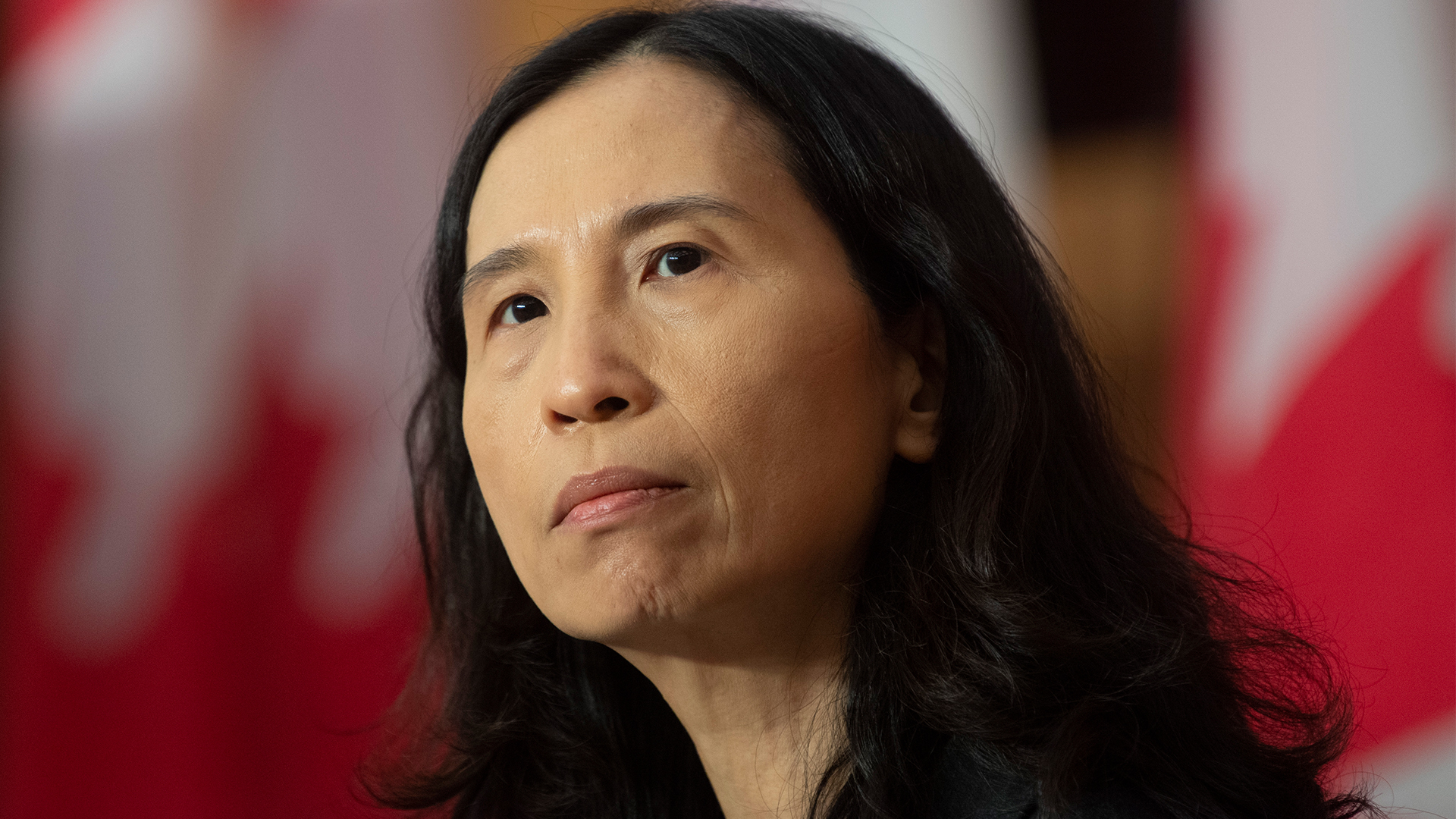
OTTAWA – The timing and pace of return-to-office plans for Canada’s public servants will hinge on what the federal government decides to do with its vaccine mandate for employees.
The federal Office of the Chief Human Resources Officer is leading a review into the six-month-old mandate, seeking input from unions and other stakeholders, but a decision will be based on the advice of public-health officials. The results of the review will be given to Treasury Board President Mona Fortier.
While the review had to start by the six-month anniversary on April 6, it is not a deadline for a decision.
Dr. Theresa Tam, Canada’s chief public health officer, said public-health officials are at a “very important juncture” in reviewing COVID-19 policies such as mandates, which are shifting from “an emphasis on requirements to recommendations.”
But Opposition MPs repeatedly pressed Tam and Health Minister Jean-Yves Duclos at the Commons health committee this week on when mandates for travellers and public servants will be lifted. Tam said the situation is unstable because of surges caused by the latest Omicron variant. She said Canada is taking a phased approach with the lifting of mandates that must be closely watched.
“I think this is just waiting to see what happens with that situation, ensuring the provinces are still able to cope as they release measures. They are just doing that at the moment and (with) that observation, the federal government makes a decision,” Tam told the committee.
Social media complicates the neutrality of the public service
Dany Richard, co-chair of the National Joint Council, a joint union and management committee, said the review is a political “hot potato” for the government. The factors to consider are many, including the risk of lifting the mandate too soon or appearing to be capitulating to the pressure of the February convoy protests.
“They might play it by ear, extend for three months, but if they remove it, we’ll have people saying ‘Hey, I don’t feel comfortable returning to work’ knowing they’ll be working with someone who is not vaccinated,” said Richard.
Last October, the government introduced a vaccination policy requiring all public servants and RCMP employees to prove they’re fully vaccinated against COVID-19 or face unpaid leave. Today, more than 98 per cent of public servants are fully vaccinated. Vaccine mandates are also imposed on employees of federally regulated industries.
Benjamin Piper, an employment lawyer at Goldblatt Partners, said keeping the mandate has become more difficult as provinces drop COVID-19 restrictions with recent declines in serious illness and death.
“There’s no doubt that the law would say that at some point, if the situation has improved sufficiently, this will no longer be justifiable. The question is when you reach that point,” Piper said.
Health officials say the two-dose vaccine mandates that initially proved effective in increasing vaccine uptake and limiting spread aren’t offering much protection in reducing transmission of Omicron.
“We know is that, with the Omicron variant, having two doses – the protection against infection and further transmission goes really low,” Tam said during a recent news conference. “You really need a third dose to provide augmentation against transmission. All that should be taken into account as the federal government looks at the policies going forward.”
But Tam suggested expanding the mandates to three doses isn’t in the cards now. It would difficult because eligibility for a booster varies by age. Also, people who have Omicron infection are asked to wait up to three months before getting the third dose.
The mandate review also comes as the more contagious COVID Omicron variant called BA.2 is on the rise and expected to create another surge in cases. The BA.2 sub-variant is on its way to becoming dominant in Ontario and across Canada. Although more transmissible than the original Omicron, it does not appear to be as severe.
All these factors are converging as the government tries to ease the workforce it sent home to work during the pandemic back to the workplace after two years.
The government is moving to a hybrid workforce, a mix of working at home and remotely. Departments are returning at their own pace and the progress is slow. Many don’t expect a major return until the fall but a new variant could change all that.
Many argue scrapping the vaccine mandate could derail imminent return-to-office plans. Many public servants want to continue working from home. Employees could resist returning to the workplace without a vaccination policy or assurance the employee next them is vaccinated.
Richard said unions would press for workers to work from home if safety fears rise. They are particularly concerned about departments that issued blanket orders for all employees to return to the office two or three days a week.
It is an open question whether the government can justify imposing the mandate and proof of vaccination on remote workers who don’t come to the office. Since the pandemic started, the government has hired hundreds of remote workers who don’t have an office to go to.
Ottawa and unions agree to simplify pay rules for public servants
Meredith Thatcher, co-founder and workplace strategist at Agile Work Evolutions, argues keeping the mandate for now, along with social distancing and other precautions will help get people back to the office sooner.
“I think having a mandate in place will make people feel more comfortable. If I am told I have to return to the office three days a week and there’s no vaccine mandate, I may say, ‘I’m sorry; I have an immunocompromised person in my house. I’m not coming.’”
Lifting the mandate could also fuel a wave of internal churn as employees pick up and move to departments that will allow them to work remotely.
“I’m telling you there’s going to be a kind of Darwinian natural selection. My members have mobility. They can go work where they want and if telework is a big deal for them, they’ll go and work somewhere else,” said Richard.
Whether the mandate stays or goes, unions argue it’s time to stop punishing the unvaccinated and let them go back to work.
Greg Phillips, president of the Canadian Association of Professional Employees (CAPE), argued the 702 unvaccinated employees should be provided with accommodations such as remote work or daily testing and personal protective equipment if they have to go to the workplace.
“We feel that those that remain unvaccinated should be allowed to start working again and start earning a living again, and that if people are going into the office, they should probably be vaccinated,” Phillips said.
Phillips said the mandate was introduced as a temporary measure and the 98-per-cent vaccination rate shows it was a success. If extended, CAPE wants a plan that explains the rationale and outlines milestones.
“We want to know the game plan for when they see an end to the policy,” said Phillips. “Every sporting event has a time limit or a score limit. You always know when the game is going to be over.”
This article was produced with support from the Accenture Fellowship on the Future of the Public Service. Read more of Kathryn’s columns here.












